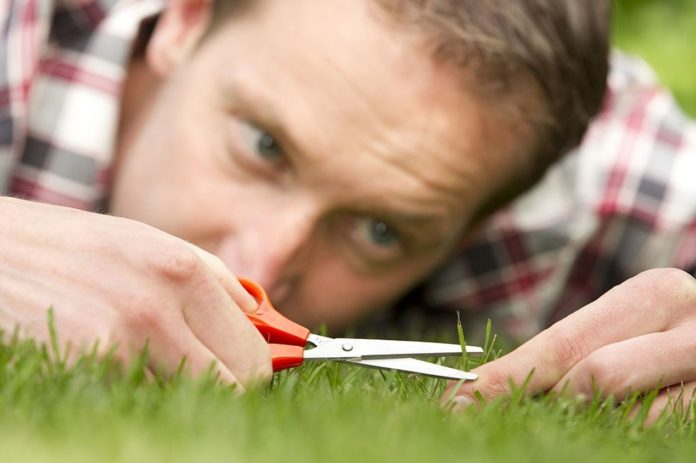For the first time, researchers have been able to record electrical signals in the human brain that show how OCD symptoms go up and down over a long period of time in people’s homes.
To find a better therapy for obsessive-compulsive disorder, a group of researchers for the first time observed electrical signals in the human brain related to ebbs and flows in OCD symptoms over an extended period of time in their homes as people went about their regular lives.
The study could be a significant step toward making an emerging therapy known as deep brain stimulation responsive to changes in OCD symptoms on a daily basis.
OCD, which affects up to 2% of the world’s population, is characterized by persistent unwanted thoughts and repetitive activities. The disease is frequently incapacitating, and up to 20-40% of patients do not respond to typical drug or behavioral therapy.
Deep brain stimulation, a procedure that uses small electrodes carefully positioned in the brain to provide moderate electrical pulses, is effective in treating more than half of patients who have failed previous therapy.
DBS has the drawback of being unable to adjust to moment-to-moment changes in OCD symptoms that are influenced by the physical and social surroundings. However, adaptive DBS, which can modify the amount of stimulation in response to real-time brain inputs, may be more successful than regular DBS and eliminate undesired side effects.
“OCD is a disorder in which symptom severity is highly variable over time and can be elicited by triggers in the environment,” says David Borton.
“A DBS system that can adjust stimulation intensity in response to symptoms may provide more relief and fewer side effects for patients. But in order to enable that technology, we must first identify the biomarkers in the brain associated with OCD symptoms, and that is what we are working to do in this study.”
The team selected five people with severe OCD who were suitable for DBS treatment for the trial. The study’s lead neurosurgeon, implanted each participant with a Medtronic experimental DBS device capable of both stimulating and recording native electrical brain impulses. Using the hardware’s sensing capabilities, the team collected brain-signal data from individuals in both clinical settings and at home as they went about their normal routines.
In addition to the brain signal data, the researchers gathered a set of behavioral biomarkers. These included facial expression and bodily movement in the clinical context. They discovered that behavioral traits were connected with changes in internal brain states using computer vision and machine learning. They examined participants’ self-reports of OCD symptom intensity at home, as well as physiological data — heart rate and general activity levels — collected through a smart watch and associated smartphone app provided by Rune Labs. All of the behavioral measures were then time-synchronized with the brain-sensing data, allowing the researchers to check for relationships between the two.
“This is the first time brain signals from participants with neuropsychiatric illness have been recorded chronically at home alongside relevant behavioral measures,” said study leader Nicole Provenza.
“Using these brain signals, we may be able to differentiate between when someone is experiencing OCD symptoms, and when they are not, and this technique made it possible to record this diversity of behavior and brain activity.”
Provenza’s data analysis revealed that the approach did detect brain-signal patterns that could be linked to OCD symptom variation. While more research in a larger cohort is needed, this preliminary study demonstrates that this method is a possible path forward in verifying candidate biomarkers of OCD.
“We were able to collect a far richer dataset than has been collected before, and we found some tantalizing trends that we’d like to explore in a larger cohort of patients,” said Borton.
“Now we know that we have the toolset to nail down control signals that could be used to adjust stimulation level according to people’s symptoms.”
Once the biomarkers are confirmed, they could be used in an adaptive DBS system. DBS systems now use a constant degree of stimulation that can be modified by a doctor during clinical visits. Adaptive DBS systems, on the other hand, would continuously stimulate and record brain activity and behavior without the need for patients to visit the clinic. When the system recognizes signals indicating an increase in symptom severity, it may boost stimulation to provide extra relief. Similarly, when symptoms subside, stimulation can be reduced. A device like this has the potential to improve DBS therapy while lowering adverse effects.
“In addition to advancing DBS therapy for cases of severe and treatment resistant OCD, this study has the potential for improving our understanding of the underlying neurocircuitry of the disorder,” said Dr. Wayne Goodman.
“This deepened understanding may allow us to identify new anatomic targets for treatment that may be amenable to novel interventions that are less invasive than DBS.”
This avenue of research is still being worked on. Because OCD is a complicated condition with very varying manifestations between patients, the team intends to increase the number of participants to capture more of that variety. They want to find a more complete set of OCD biomarkers that can be used to guide adaptive DBS devices. Once such biomarkers are in place, the team aims to collaborate with device manufacturers to put its DBS devices into action.
“Our goal is to understand what those brain recordings are telling us and to train the device to recognize certain patterns associated with specific symptoms,” added Dr. Sameer Sheth.
“The better we understand the neural signatures of health and disease, the greater our chances of using DBS to successfully treat challenging brain disorders like OCD.”
Source: 10.1038/s41591-021-01550-z
Image Credit: Getty
You were reading: How to know someone is experiencing OCD symptoms – this study might help
